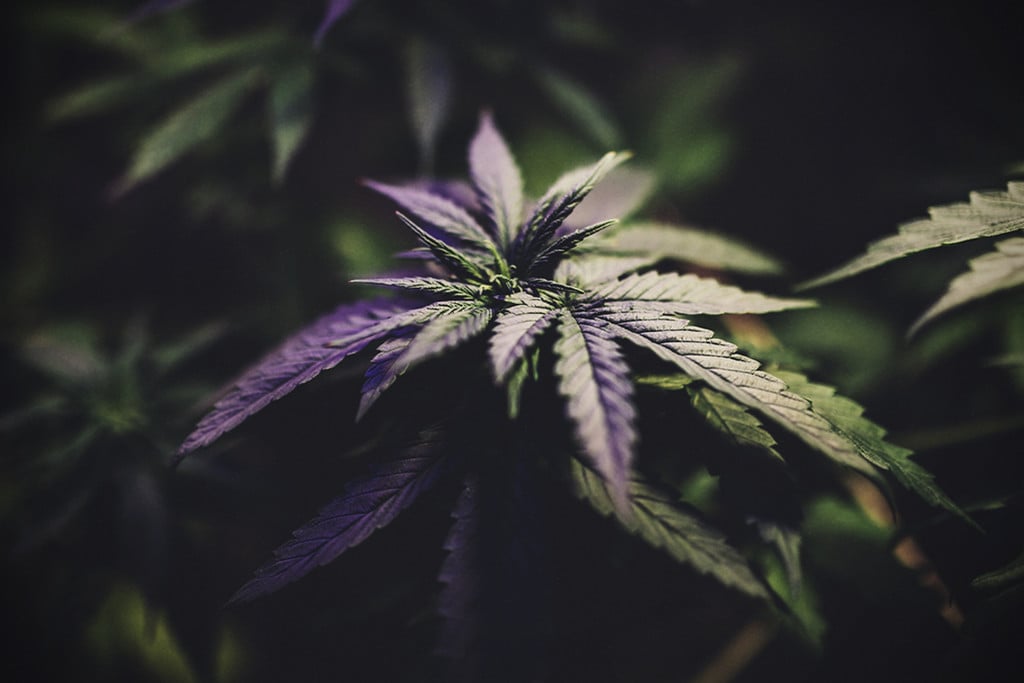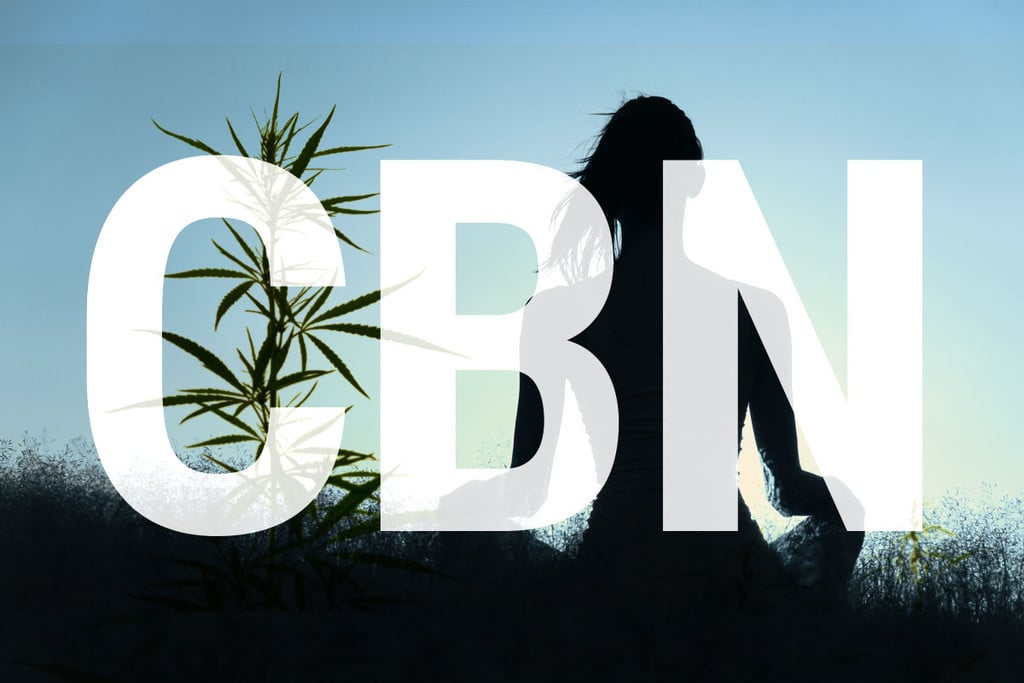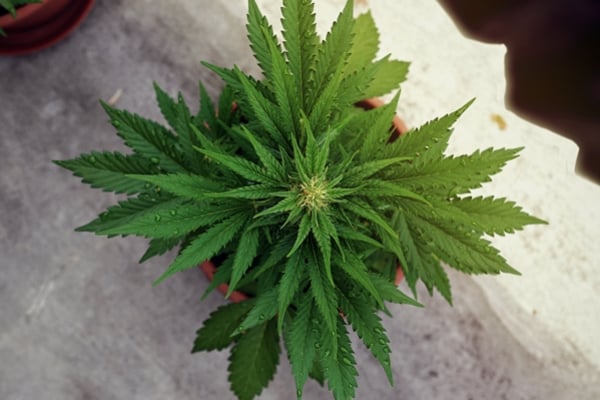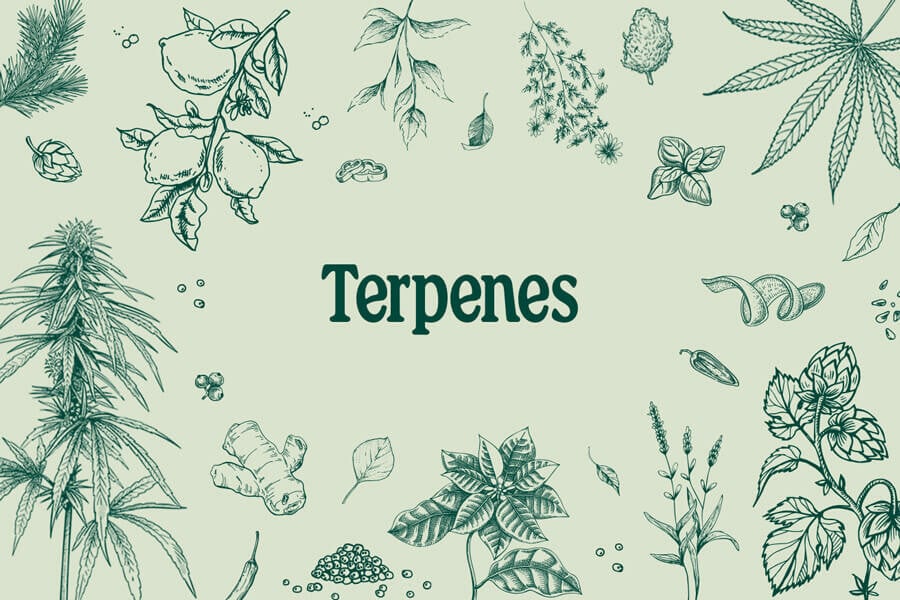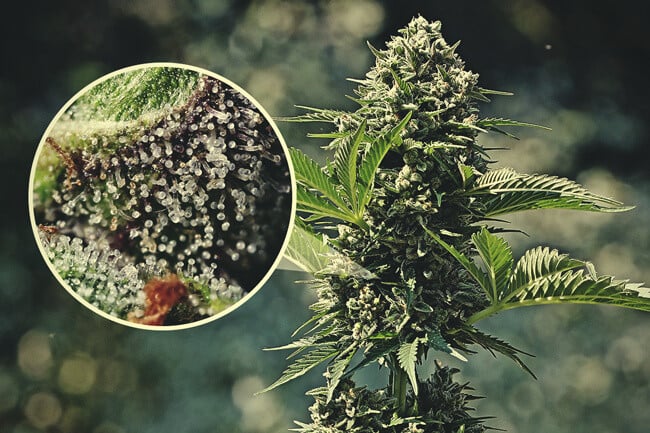 Cannabis Grow Guide by Royal Queen Seeds
Cannabis Grow Guide by Royal Queen Seeds
- Growing cannabis step by step
- Cannabis growing basics
- Choosing your seeds
- How to germinate seeds
- The cannabis vegetative stage
- The cannabis flowering stage
- Harvesting cannabis
- Trimming, drying, and curing
- Choosing pots and soil
-
Growing indoors
- A Complete Overview Of Growing Cannabis Indoors
- Cannabis Cultivation Tips: How To Set Up Indoor Grow Lights
- How Many Cannabis Plants Can You Grow Per Square Metre?
- Indoor Cannabis Growing: Relative Humidity and Temperatures
- Hydroponics Cannabis Growing Guide (with diagrams)
- Cannabis Micro Growing: Growing Great Weed in Tiny Spaces
- Growing outdoors
- How to grow autoflowering cannabis
- Cannabis nutrients and pH
- Cannabis troubleshooting: Nutrients
-
Cannabis troubleshooting: Growing
- Cannabis Seed Germination — Troubleshooting Guide
- How to Deal With Pythium (Root Rot) in Cannabis Plants
- Slow Cannabis Plant Growth And What You Can Do About It
- How to Deal With Leggy Cannabis Seedlings
- Watering Your Cannabis: How to Fix Overwatering and Underwatering
- Understanding Male, Female, And Hermaphrodite Cannabis
- Identifying and Treating Common Cannabis Ailments
- How To Revive a Sick Cannabis Plant
- How to Avoid Mouldy Weed During Drying and Curing
- How to Prevent and Treat Dry and Crispy Cannabis Leaves
- What Cannabis Leaves Can Tell You
- Causes and Solutions for Yellow Cannabis Leaves
-
Cannabis Strains Grow Report
- HulkBerry Automatic Grow Report
- Blue Cheese Auto Grow Report
- Purple Punch Automatic Strain Grow Report
- Triple G Automatic Grow Report
- Do-Si-Dos Automatic Grow Report
- Green Gelato Automatic Grow Report
- Haze Berry Automatic Grow Report
- Purple Queen Automatic Grow Report
- Cookies Gelato Automatic Grow Report
- Sherbet Queen Automatic Grow Report
- Sweet Skunk Automatic Grow Report
- Medusa F1 Grow Report
- Cannabis plant training
-
Weed growing tips
- The Cannabis Plant Anatomy
- How to preserve seeds
- How Much Sunlight Do Outdoor Cannabis Plants Need To Grow?
- How to Control and Prevent Stretching in Cannabis Plants
- My Cannabis Plants Are Growing Too Tall: What Should I Do?
- Should You Worry About Purple Or Red Cannabis Stems?
- What To Do When Your Indoor Cannabis Won’t Flower
- How To Protect Your Cannabis Plants From Heat Stress
- How To Tell If Your Female Cannabis Plant Has Been Pollinated
- Growing Medical Marijuana
- Bud Washing: How to Clean Your Weed
- Understanding Cannabis Yield per Plant
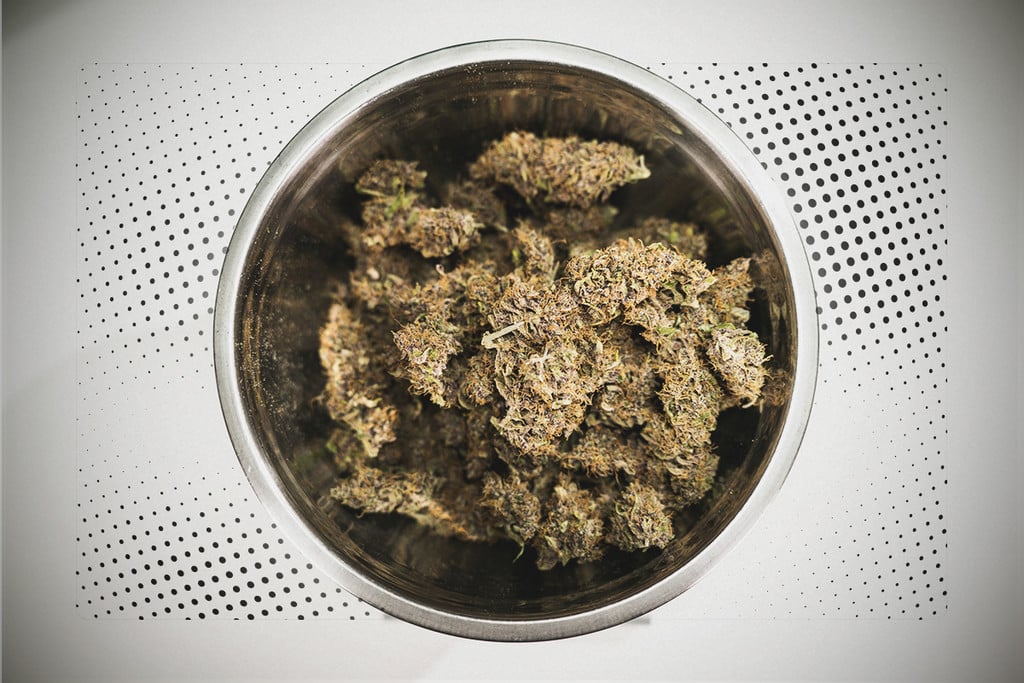
Is It Better To Harvest Your Cannabis Early Or Late?
Harvest time is the most important and exciting stage of growing cannabis. This is the time when your hard work finally pays off. However, getting to this point is easier said than done. A lot can go wrong before harvest comes around. Not to mention, WHEN you choose to harvest can totally make or break your final stash. It pays to consider beforehand when and how to give your plants the chop, as well as what to do with the harvested bud afterward.
If you find yourself slightly perplexed by the notion of determining when to harvest, then read on—we’ll cover everything you need to know.
Contents:
Harvest Signs
1. Trichome Colour
There are a couple ways to tell when it’s time to harvest your cannabis buds. Perhaps the most reliable is to examine the colour of the trichomes. These resin-bearing glands are considered the best standard of measurement as they are more consistent in their results than other recognition methods. In order to do this, you will need a magnifying glass—trichomes are quite tiny.
Trichomes go through three consecutive colour states. These are clear, cloudy, and amber. The best time to harvest is when half of the trichomes are amber, and half are clear or cloudy. This colour disparity is due to the uppermost buds ripening earlier than the ones at the bottom. In any case, you don’t want to wait for all trichomes to turn amber, as this generally leads to a decrease in THC and an increase in the sleep-inducing cannabinoid CBN.
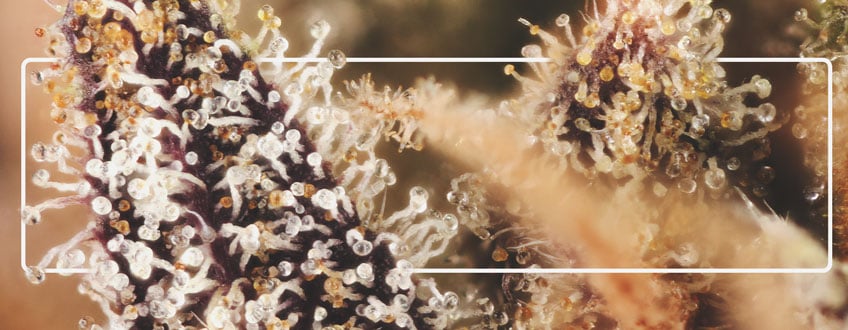
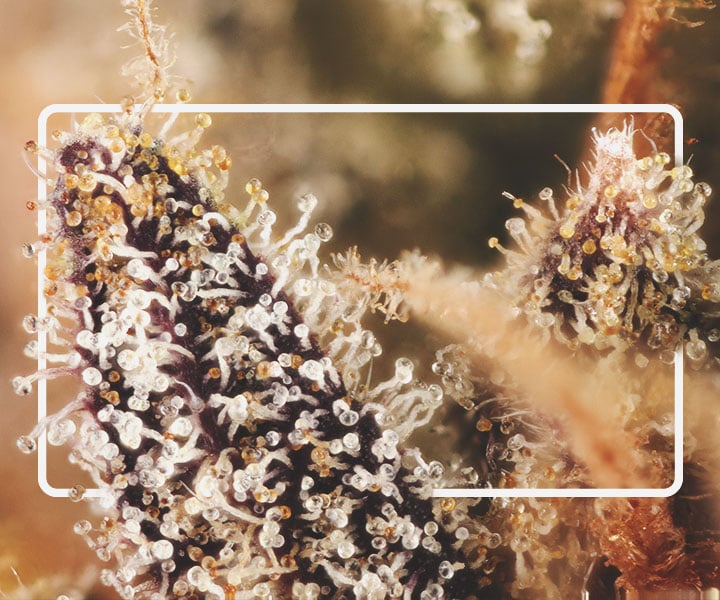
2. Yellow Leaves
Yellow leaves are also a good sign that your cannabis plant is ready to harvest. You can flush your plant when its large fan leaves start to yellow or when they autumn off by themselves. But bear in mind that the falling of leaves is unlikely to happen when you use fertilisers. So you might want to check for other clues to determine harvest time.
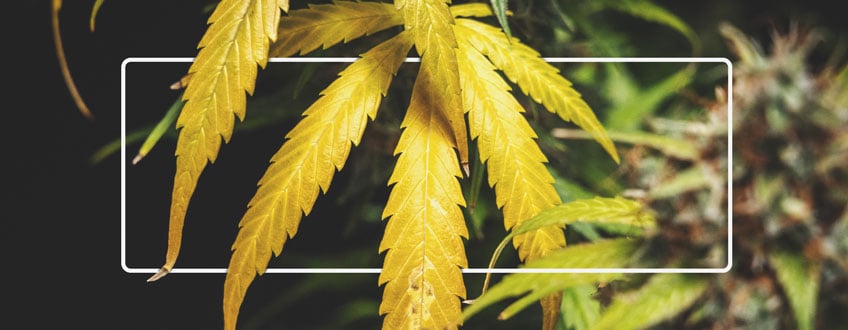
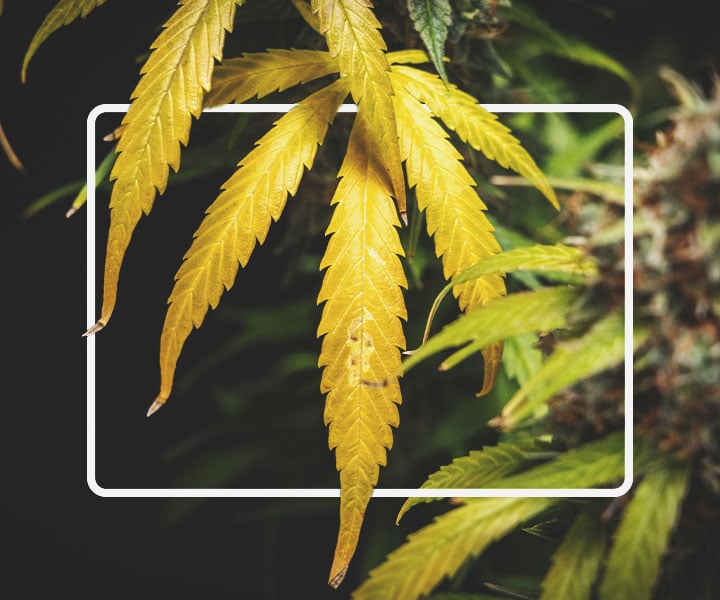
3. Pistils
If you’ve got a photoperiod cannabis plant, then checking its pistils and stigmas is a useful way to gauge whether it’s ready for the chop. You can usually assume that a plant is ready to harvest when about half of the pistils are brown. Again, the trichome method is more reliable.

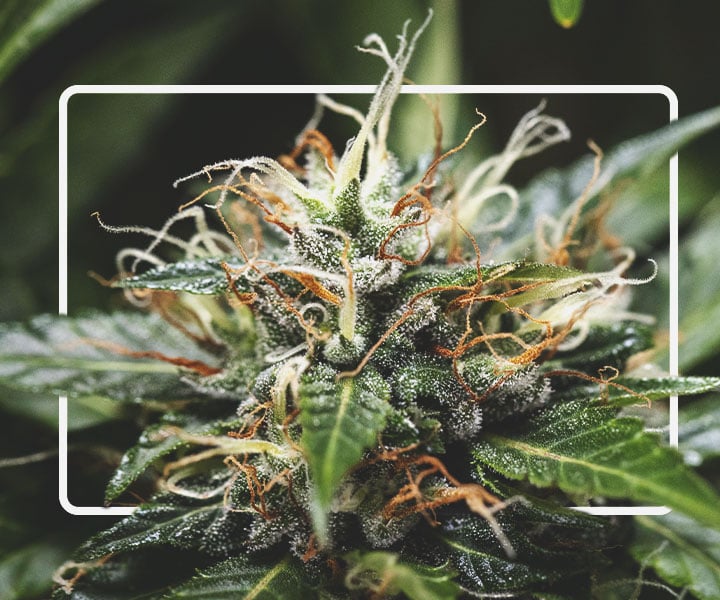
4. Curling Leaves
The drying and curling of leaves is another sign that your cannabis plant is probably ready to be harvested. This happens because your cannabis takes less water as it nears its final phase of life. But be sure to confirm this method in conjunction with others, as there are pests and diseases that can cause dry and curling leaves.
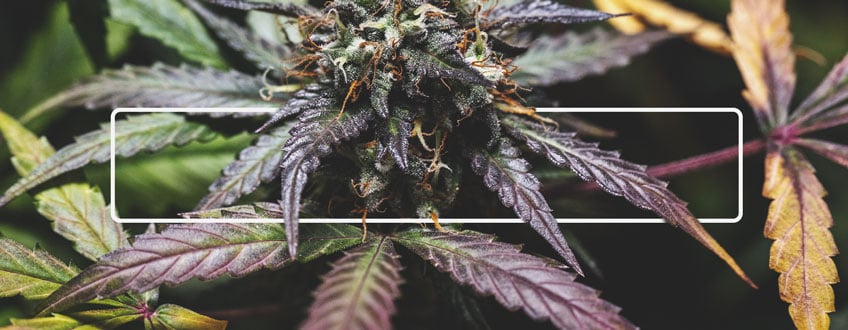
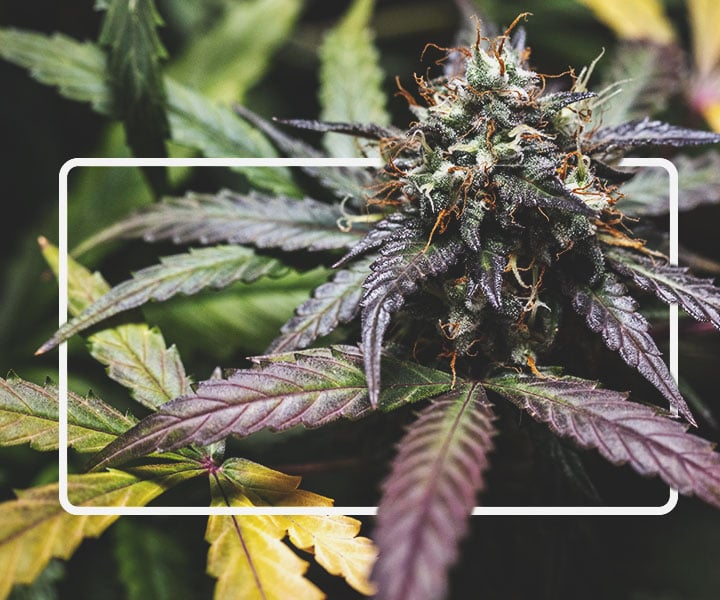
5. Breeder Schedule
Although not set in stone, it’s important to at least consider the harvest schedule provided by your seed source. This is usually found on the seed packaging. This schedule is the approximate number of days/weeks it will take for your cannabis seed to grow into a mature plant. This schedule, however, fluctuates based on growing conditions such as environment, water, and heat. Always take this valuable breeder information with a grain of salt.
Early Harvest
If you want to harvest the maximum amount of buds your cannabis can produce, then harvesting early isn’t a good idea. However, there are numerous reasons why you may opt to harvest a bit earlier than usual. Some of the most common reasons are bug and mould prevention. In less-than-ideal climates, poor weather can catalyse the onset of bud rot and other nasty ailments as the harvest season comes to a close. If you can’t move your plants inside to avoid harsh conditions, it may be worth doing a premature chop.
Offshoots of surrounding plants can also knock your cannabis over, which is why harvesting early is sometimes a good idea. Stealth growing is another reason some opt to harvest before the plant is truly ready. While technically you can start harvesting as soon as your plant produces flowers, the cannabinoid levels remain very low until the buds are mature.
Avoid premature harvesting as much as possible, but if you really need to, it isn’t the end of the world. If you only harvest a few days early, the “damage” to potency will be minimal. Some bud is better than no bud at all!
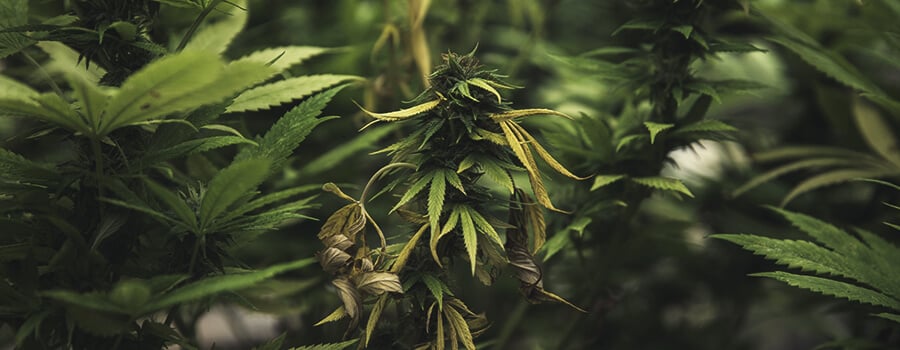
Late Harvest
On the other hand, a late harvest means that you allow your cannabis plant to mature past the point of peak potency. Many consider this a bad method due to the degradation of THC—the cannabinoid most users want to take advantage of. And while the terpenes on buds are indeed more pungent when allowed to mature, the flavour and aroma will go south if kept alive too long.
Harvesting your plants late induces a more narcotic and “stoney” high as opposed to energising cerebral stimulation. Even if you grow a sativa, harvesting late will likely result in effects similar to indica-dominant strains. While this is not ideal for many, some medicinal users prefer the greater levels of CBN and more sleep-inducing effects of weed that is left to mature for longer.
Finally, you should also be careful with late harvests as some strains will begin to self-pollinate and turn intersex as a result.
Free Pro
Harvest Guide
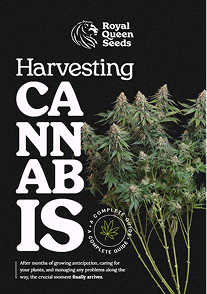
Conclusion
Timing is an important factor to consider when you're growing cannabis. The amount of time you allow it to mature has a huge effect on its cannabinoid content. It’s best to consider the above recognition methods to harvest your plant when it is neither too young nor old. This way, you will get the best of both worlds and the most genuine strain experience.
 Grow Guide Topic Finder
Grow Guide Topic Finder
- Growing cannabis step by step
- Cannabis growing basics
- Choosing your seeds
- How to germinate seeds
- The cannabis vegetative stage
- The cannabis flowering stage
- Harvesting cannabis
- Trimming, drying, and curing
- Choosing pots and soil
-
Growing indoors
- A Complete Overview Of Growing Cannabis Indoors
- Cannabis Cultivation Tips: How To Set Up Indoor Grow Lights
- How Many Cannabis Plants Can You Grow Per Square Metre?
- Indoor Cannabis Growing: Relative Humidity and Temperatures
- Hydroponics Cannabis Growing Guide (with diagrams)
- Cannabis Micro Growing: Growing Great Weed in Tiny Spaces
- Growing outdoors
- How to grow autoflowering cannabis
- Cannabis nutrients and pH
- Cannabis troubleshooting: Nutrients
-
Cannabis troubleshooting: Growing
- Cannabis Seed Germination — Troubleshooting Guide
- How to Deal With Pythium (Root Rot) in Cannabis Plants
- Slow Cannabis Plant Growth And What You Can Do About It
- How to Deal With Leggy Cannabis Seedlings
- Watering Your Cannabis: How to Fix Overwatering and Underwatering
- Understanding Male, Female, And Hermaphrodite Cannabis
- Identifying and Treating Common Cannabis Ailments
- How To Revive a Sick Cannabis Plant
- How to Avoid Mouldy Weed During Drying and Curing
- How to Prevent and Treat Dry and Crispy Cannabis Leaves
- What Cannabis Leaves Can Tell You
- Causes and Solutions for Yellow Cannabis Leaves
-
Cannabis Strains Grow Report
- HulkBerry Automatic Grow Report
- Blue Cheese Auto Grow Report
- Purple Punch Automatic Strain Grow Report
- Triple G Automatic Grow Report
- Do-Si-Dos Automatic Grow Report
- Green Gelato Automatic Grow Report
- Haze Berry Automatic Grow Report
- Purple Queen Automatic Grow Report
- Cookies Gelato Automatic Grow Report
- Sherbet Queen Automatic Grow Report
- Sweet Skunk Automatic Grow Report
- Medusa F1 Grow Report
- Cannabis plant training
-
Weed growing tips
- The Cannabis Plant Anatomy
- How to preserve seeds
- How Much Sunlight Do Outdoor Cannabis Plants Need To Grow?
- How to Control and Prevent Stretching in Cannabis Plants
- My Cannabis Plants Are Growing Too Tall: What Should I Do?
- Should You Worry About Purple Or Red Cannabis Stems?
- What To Do When Your Indoor Cannabis Won’t Flower
- How To Protect Your Cannabis Plants From Heat Stress
- How To Tell If Your Female Cannabis Plant Has Been Pollinated
- Growing Medical Marijuana
- Bud Washing: How to Clean Your Weed
- Understanding Cannabis Yield per Plant


























